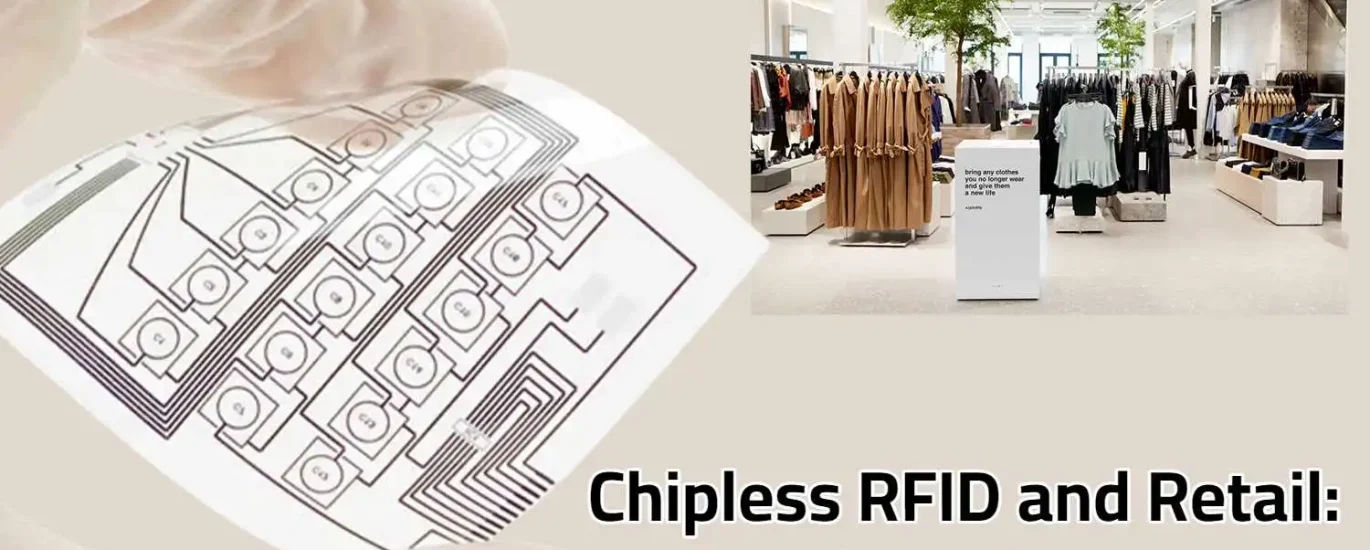Introduction
The fashion retail industry is defined by rapid product cycles, seasonal inventory, and ever-changing consumer preferences. For global giants like H&M (Hennes & Mauritz)—which operates over 4,000+ stores across 70+ markets—the stakes are even higher. One misplaced garment, one delay in restocking, or one undetected out-of-stock condition can lead to lost sales, markdowns, and reputation damage.
To address these challenges, H&M has turned to Radio Frequency Identification (RFID) technology—embedding RFID tags into garments and using handheld readers, overhead scanners, and software analytics to enable real-time inventory visibility, loss prevention, and store-level operational agility.
This case study explores how H&M has deployed RFID tags across its inventory and store network, the operational transformation it enabled, the metrics it improved, and what other retailers can learn from this global fashion supply chain digitization journey.
Inventory Complexity in Fast Fashion
A. Inventory Volume and Velocity
H&M introduces new collections every 4–6 weeks, with:
- 30,000+ SKUs globally at any point
- High SKU churn due to micro-trends
- Over 2 billion items shipped annually
This leads to:
- Complexity in inventory counting
- Out-of-stock items not always visible to associates
- Shrinkage and theft risks
- Delayed replenishment cycles
B. Legacy Tracking Systems Were Inadequate
Previously, H&M relied on:
- Barcodes and manual scanning
- Nightly inventory reconciliation
- POS-driven stock deduction
- Staff manually searching for misplaced items
Problems included:
- Inaccurate stock visibility
- Replenishment delays of 48–72 hours
- Stock hiding in fitting rooms or backrooms
- Misplaced markdowns or overstocking
Enter RFID – What It Means and Why It’s Better
A. RFID vs. Barcodes
| Feature | Barcode | RFID |
| Line of Sight Required | Yes | No |
| Scan Time per Item | 3–5 seconds | <1 second |
| Bulk Scanning | No | Yes |
| Data Storage | Limited | Can hold SKU, batch, price, size |
| Durability | Moderate | High |
| Security | Basic | Encrypted options available |
B. RFID Tags at H&M
- Passive UHF RFID tags embedded in each garment label
- Tags carry:
- Unique EPC (Electronic Product Code)
- SKU, size, style, price, batch
- Tags are non-removable until checkout
- Cost per RFID tag: ~₹4–₹6 per item (bulk procurement)
H&M’s RFID Integration Timeline
| Year | Milestone |
| 2014–2015 | Initial pilots in 3 countries (Germany, Sweden, UK) |
| 2016–2018 | Store-wide rollouts in Europe |
| 2019 | RFID reaches 1,700+ stores globally |
| 2020–2022 | RFID integration with online orders (BOPIS, BORIS) |
| 2023–Present | RFID-enabled omni-channel intelligence across 3,500+ stores |
How the System Works – RFID Workflow at H&M
A. Tagging
- RFID tags sewn into garments at the manufacturing level
- Every new item entering warehouse is pre-tagged
- Ensures consistency across production and inventory
B. In-Store Operations
| Operation | RFID-Enabled Process |
| Receiving Goods | Items scanned at dock using handheld RFID readers |
| Shelf Replenishment | Real-time alerts generated if shelf items are low |
| Cycle Counting | Staff walks through aisles with RFID gun—scans 1,000+ items/minute |
| Fitting Room Management | RFID alerts if items are not returned or mis-shelved |
| Theft Reduction | RFID tags tracked during store exit—integrated with EAS (electronic article surveillance) |
C. Checkout & Deactivation
- RFID tags are deactivated at POS
- Tags are soft, fabric-safe and do not interfere with customer experience
Operational Metrics Improved
A. Inventory Accuracy
| Metric | Before RFID | After RFID |
| In-store inventory accuracy | 60–70% | 95–98% |
| Out-of-stock detection rate | ~45% | >90% |
| Manual cycle count time | 6–8 hours | <1 hour |
| Inventory reconciliation frequency | Weekly | Daily/On-demand |
B. Shrinkage and Loss Prevention
- Shrinkage reduced by 20–25% in RFID-enabled stores
- Loss detection in fitting rooms improved via tag alerts
C. Store Staff Productivity
- Staff saved 6–8 hours/week on inventory tasks
- Associates redirected to customer service & styling
D. Omni-Channel Fulfillment
- Enabled services like:
- Click & Collect (BOPIS)
- Buy Online, Return In-Store (BORIS)
- Near-perfect inventory accuracy allowed H&M to promise and fulfill from store stock
Store-Level Transformation
A. Visual Dashboard in Store Tablets
- Live stock dashboard
- Smart alerts (e.g., “Shelf has only 1 piece left of size M, black hoodie”)
- Color-coded restocking map for employees
B. RFID Readers Installed
- Handheld readers for staff
- Fixed readers at backroom, entrance, and fitting room areas
- Integration with store planograms for efficient restocking
Impact on Supply Chain & Retail Intelligence
A. Demand Forecasting
- RFID data fed into centralized data lake
- Enables:
- Style-level demand forecasting
- City and store-level granular inventory trends
- Better markdown planning
B. Replenishment Automation
- Reorder triggers initiated based on:
- RFID-sensed low shelf stock
- Historical sales velocity
- Current promotion cycles
- Automated stock transfer between stores/warehouses
C. Store-to-Store Intelligence
| Use Case | Enabled by RFID |
| Cross-store returns | Items traced and reassigned quickly |
| Inventory balancing | Surplus stock reallocated between nearby stores |
| Shelf health analytics | Stores ranked on shelf availability |
Cost-Benefit Analysis
A. Initial Investment
- RFID tags: ₹4–6 per item
- Readers: ₹80,000–₹1.5 lakh per device
- Software + Integration: Custom SAP + Oracle back-end connectors
B. ROI Realization
- Break-even within 18–24 months
- Savings from:
- Reduced labor
- Improved replenishment
- Shrinkage reduction
- Increased full-price sales (fewer lost sales)
Challenges and Resolutions
| Challenge | Solution |
| Tag damage during washing (early phase) | Redesigned durable textile-safe tags |
| Reader signal interference | Shifted to UHF tags with stronger antennas |
| Staff training resistance | App-based micro-learning, gamified usage leaderboard |
| Integration with legacy systems | Middleware APIs and SAP extensions developed in-house |
RFID in Online and Omnichannel Operations
Omnichannel Benefits
- RFID integration supports:
- Order from store
- Geo-specific inventory ads (e.g., “Available at Connaught Place H&M”)
- Real-time promise engine for deliveries
- BOPIS pickup increased by 40% YoY after RFID rollout
- Return-to-shelf time for returns dropped from 12 hours to 2 hours
Competitive Benchmarking
| Brand | RFID Adoption | Inventory Accuracy | BOPIS Integration | Omni-channel Use |
| H&M | Full (3,500+ stores) | 95–98% | ✅ | ✅ |
| Zara | Partial | 90% | ✅ | ✅ |
| Uniqlo | Testing | 70–80% | ❌ | Limited |
| Forever 21 | No | 60–70% | ❌ | ❌ |
| Levi’s | Select regions | 80–85% | ✅ | ✅ |
H&M is an industry leader in large-scale RFID deployment in apparel.
Vision 2025 – RFID Beyond Inventory
H&M’s Next Steps
- RFID for Sustainability Tracking
- Tagging reused/recycled garments
- Tracking carbon footprint at batch level
- Smart Fitting Rooms
- RFID mirrors showing style alternatives, upsell suggestions
- Store Heatmaps
- RFID readers track footfall and item handling data to redesign layouts
- AI + RFID for Auto-Replenishment
- Dynamic shelf refill optimization based on peak time patterns
- Supplier Compliance
- RFID checkpoints at factory gates for vendor performance benchmarking
Conclusion
H&M’s deployment of RFID-based inventory tracking is a benchmark in operational and retail intelligence. The technology has shifted inventory from being a passive backend metric to a real-time operational lever, enabling:
- Faster replenishment
- Improved customer experience
- Efficient omnichannel services
- Lower shrinkage
- Smarter supply chain analytics
As H&M scales this globally and layers it with AI, RFID will continue to be the invisible engine powering fast fashion’s speed and accuracy.
Key Learnings for Other Retailers
- RFID is not just a warehouse tool—it is a frontline retail differentiator
- Start with high-turnover SKUs to justify cost
- Link RFID with POS, warehouse, and planogram systems for real power
- Train staff deeply; tech only works with people adoption
- RFID prepares brands for future omnichannel and predictive retailing
Sources
- H&M Annual Reports (2015–2024)
- RFID Journal: H&M Implementation Case Study
- Apparel Resources India & ET Retail Analysis
- SAP + Oracle RFID Whitepapers
- McKinsey Retail Transformation Reports
- Interviews from NRF 2023 on RFID Retail Applications
- H&M Omnichannel Press Briefings (2022–2023)






